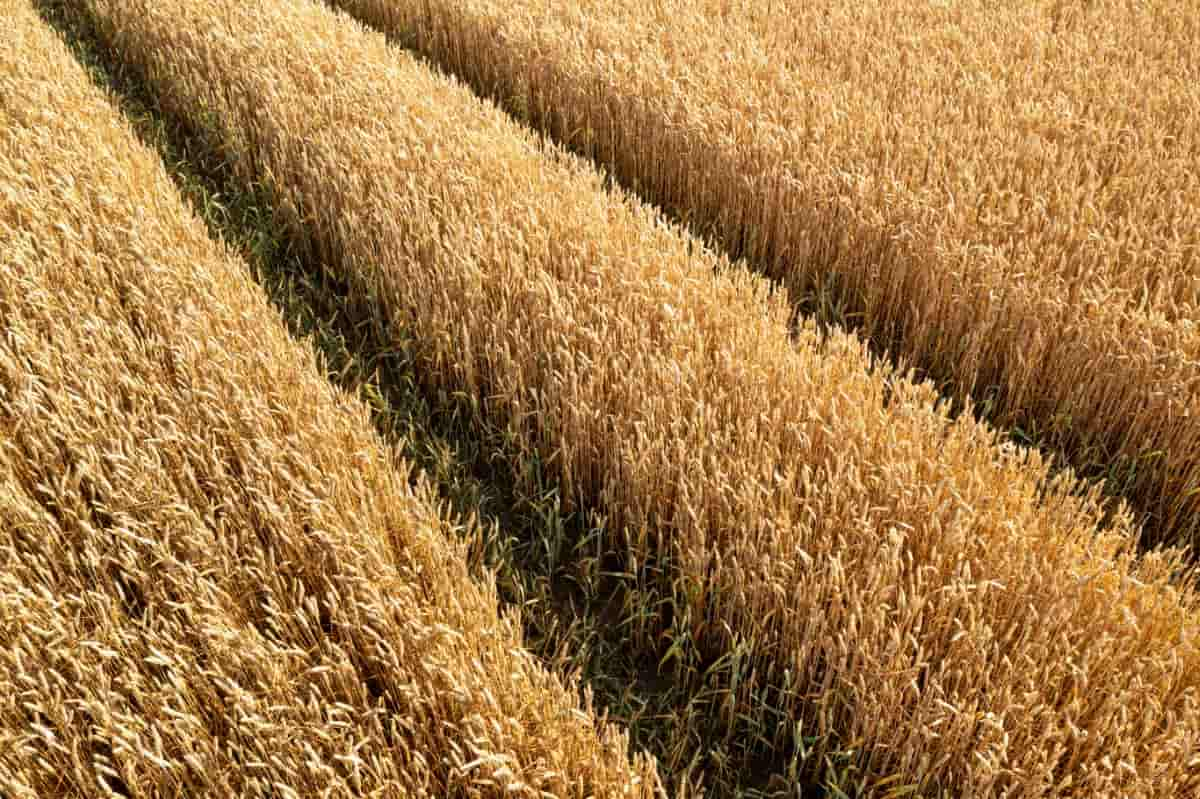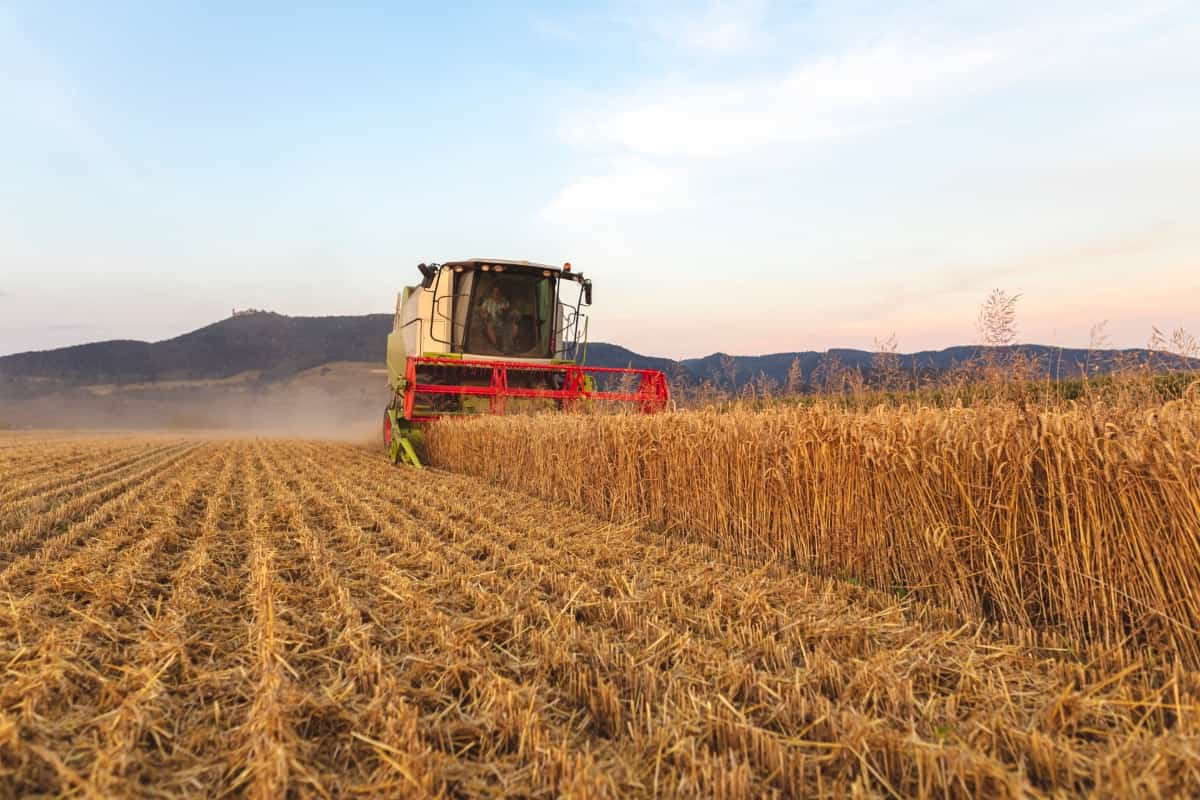Nebraska ranks as the sixth-largest wheat-producing state in the United States, with over 1.5 million acres of wheat harvested annually. Here we learn about wheat farming in Nebraska, from the initial seed planting to the final harvest. We will also explore the various types of wheat cultivated in the state, as well as the challenges farmers face and the innovative solutions they employ.

Grow Wheat in Nebraska
Types of Wheat Grown in Nebraska
There are two primary types of wheat grown in Nebraska: winter wheat and spring wheat. Winter wheat accounts for about 95% of the total wheat production in the state, with the remaining 5% being spring wheat. While winter wheat is seeded in the fall and harvested in the summer, spring wheat is planted in the spring and harvested in late summer or early autumn.
The most common winter wheat varieties grown in Nebraska include hard red winter wheat, which is known for its high protein content and strong gluten, and soft red winter wheat, which is primarily used for pastries and other baked goods. Spring wheat varieties, such as hard red spring wheat and durum, are known for their high protein content and are typically used for bread and pasta.
Preparing the Soil
Before planting wheat, Nebraska farmers must first prepare the soil. Soil preparation typically begins in the fall, following the harvest of a previous crop like soybeans or corn. Farmers first perform soil tests to determine the nutrient levels and pH of the soil. Based on these results, they apply fertilizers, lime, or other soil amendments to optimize the soil’s fertility and pH levels for wheat growth.
In addition to soil testing and amending, farmers often employ tillage practices to prepare the soil for planting. Conventional tillage involves plowing and disking the soil to break up clods and create a fine, uniform seedbed. However, more and more farmers are adopting conservation tillage practices, such as no-till or minimum-till, to reduce soil erosion, improve soil structure, and conserve moisture.
Planting the Seeds
The planting of wheat seeds in Nebraska typically begins in late September or early October for winter wheat and late March or early April for spring wheat. Farmers use specialized seeding equipment, such as grain drills or air seeders, to plant the seeds at a uniform depth and spacing.
Winter wheat is usually planted at a rate of 60 to 90 pounds per acre, while spring wheat is planted at a rate of 90 to 120 pounds per acre. Planting rates can vary depending on factors such as seed size, soil type, and weather conditions. Deeper planting might lead to poor emergence and lower yields, thus 1 to 1.5 inches is the recommended planting depth for wheat seeds.
Irrigation and Fertilization
Wheat farming in Nebraska relies on a combination of natural precipitation and irrigation to provide adequate water for the growing crop. While winter wheat predominantly relies on stored soil moisture and snowmelt for its water needs, spring wheat often requires supplemental irrigation during the growing season. Many farmers use center-pivot irrigation systems to deliver water to their wheat fields, especially in areas with limited rainfall.
In case you missed it: How to Start Wheat Farming in Wisconsin: A Step-By-Step Production Guide for Planting to Harvest

Fertilization is a crucial component of wheat production, as it provides the necessary nutrients for plant growth and development. Wheat needs nitrogen, phosphorus, and potassium, with nitrogen being the most important for production and quality. Farmers typically apply a combination of pre-plant, in-season, and top-dress fertilizer applications to meet the crop’s nutrient requirements.
Pest and Disease Management
Pest and disease management is a vital aspect of wheat farming in Nebraska, as it ensures the health and productivity of the crop. Farmers must carefully monitor their fields for signs of pest infestations or disease outbreaks and implement appropriate control measures when necessary.
Common pests affecting wheat in Nebraska include aphids, armyworms, and Hessian flies. Integrated pest management (IPM) strategies are employed by farmers to control these pests, combining cultural, biological, and chemical methods. These strategies may include crop rotation, planting resistant varieties, releasing beneficial insects, and applying targeted insecticides.
Wheat diseases, such as leaf rust, stem rust, stripe rust, and Fusarium head blight, can significantly reduce yields and grain quality if not managed properly. Farmers rely on a combination of preventive measures, such as selecting resistant varieties, employing proper crop rotation, and applying fungicides when necessary, to minimize disease pressure and protect their crop.
Growth Stages and Development
Wheat progresses through several distinct growth stages from planting to harvest. For both winter and spring wheat, these stages include germination, emergence, tillering, jointing, boot, heading, flowering, milk, dough, and finally, maturity. Each growth stage has specific management requirements, such as optimal timing for fertilizer applications or disease and pest control measures.
Winter wheat, in particular, has an additional stage known as vernalization, which occurs during the cold winter months. Vernalization is a crucial stage for winter wheat, as it allows the plant to become cold-hardened and prepares it for spring growth.
Harvesting the Wheat
Wheat harvest in Nebraska usually begins in late June for winter wheat and late August or early September for spring wheat. Harvesting is done using specialized equipment called combines, which cut the wheat stalks, separate the grain from the chaff, and collect the clean grain in a storage tank.
To ensure optimal grain quality and minimize yield loss, farmers must closely monitor the moisture content of the wheat. The ideal moisture content for harvesting wheat is between 12% and 15%. If the moisture content is too high, the grain may spoil in storage, while if it’s too low, excessive shattering and yield loss can occur during the harvesting process.
Post-Harvest Processing and Storage
Once the wheat is harvested, it must undergo post-harvest processing and storage before it can be sold or used for various purposes. Wheat is typically transported to local grain elevators or processing facilities, where it is cleaned, graded, and stored. Proper storage conditions, such as maintaining appropriate temperature, humidity, and aeration, are critical for preventing spoilage and ensuring the long-term quality of the grain.
In case you missed it: How to Start Wheat Farming in North Carolina: A Step-By-Step Production Guide for Planting to Harvest

Conclusion
Wheat farming in Nebraska is a complex and dynamic process, requiring careful planning, resource management, and constant adaptation to changing conditions. From seed to harvest, Nebraska farmers employ a range of practices and technologies to ensure the production of high-quality wheat that feeds the nation and the world.
- Ultimate Guide to Ossabaw Island Hog: Breeding, Raising, Diet, and Care
- Ultimate Guide to Juliana Pig: Raising Facts, Size, Diet, Care, and Lifespan
- Raising Lleyn Sheep: Disadvantages, Price, Uses, Characteristics, and Care
- Ultimate Guide to Meishan Pig: Breed Facts, Breeding, Raising, and Care
- Ultimate Guide to Teacup Pigs: Raising, Diet, Lifespan, Cost, and Care
- Guide to Raising Poll Dorset Sheep: Facts, Profile, Characteristics, Uses, and Care
- Ultimate Guide to Bighorn Sheep: Characteristics, Diet, Lifespan, Breeding, and Lifecycle
- Ultimate Guide to Raising Katahdin Sheep: Farming Facts, Breed Profile, Uses, and Care
- Ultimate Guide to Raising Oreo Cows: Belted Galloways Farming Facts, Profile, Uses, and Care